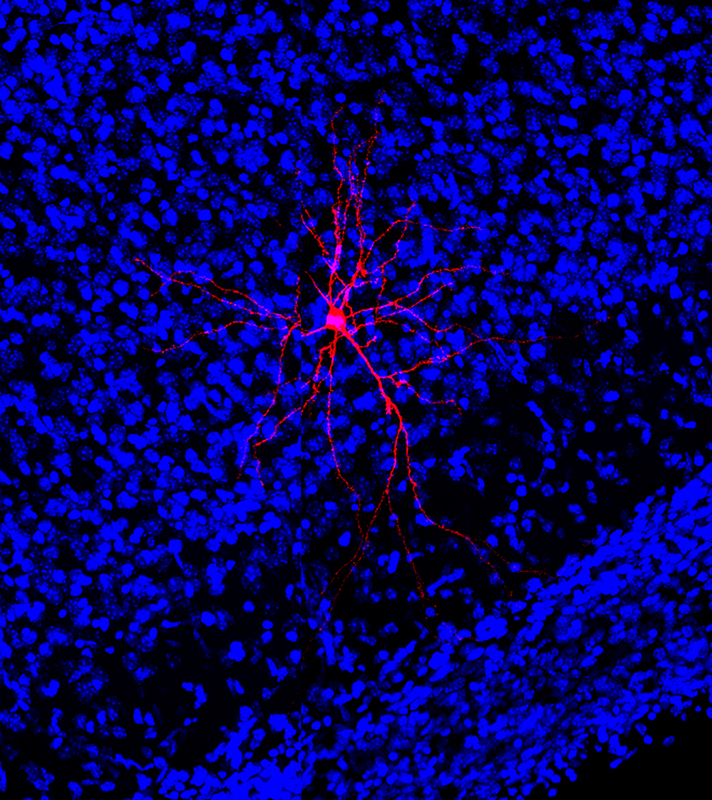August 15, 2018
New robotic technology may provide more insight into neurological diseases, which affect about one-third of Americans
 This image shows a neuron patched with the automated image-guided patch clamp system in the brain slice. Purdue University researchers developed a robotic system that provides an advanced way to study the brain and how the individual neurons inside function. (Image provided)
Download image
This image shows a neuron patched with the automated image-guided patch clamp system in the brain slice. Purdue University researchers developed a robotic system that provides an advanced way to study the brain and how the individual neurons inside function. (Image provided)
Download image
WEST LAFAYETTE, Ind. – Purdue University researchers are a step closer to answering one of the critical questions about the brain – how neural networks in the organ perform the computations necessary for higher-level brain functions.
The technology also provides a new tool for the potential development of medications for neurological diseases such as Alzheimer’s, multiple sclerosis and epilepsy.
The Purdue researchers developed a robotic system that provides an advanced way to study the brain and how the individual neurons inside function. The Purdue software automates most of the work involved in the patch-clamp technique, a widely used process involving the attachment of a glass pipette to a cell membrane to record electrical activity from individual neurons.
The system provides an advanced method for scientists to identify, target and record neuron activity in the brain.
“Our technology has far-reaching implications,” said Alexander Chubykin, an assistant professor of biological sciences at Purdue, who led the research team. “Our technology opens up new doors to study the brain and the impact of new drugs on patients who suffer from neurological diseases.”
The Purdue team developed an algorithm to drive the system without a person controlling the movement.
“The traditional patch-clamp method is done manually and requires lots of time and training,” Chubykin said. “Our process uses computer vision with automatic image guidance to make the whole technique faster, easier and require less training. This is an incredible step forward.”
Purdue’s software technology also provides 3D coordinates of cells in the brain sample, which scientists can use to precisely locate the individual cells and then target them with new drugs. The Purdue technology allows this examination without extracting the cells, which is a requirement for current drug screening methods.
“A truly great component of our innovation is the ability to study the neurons in an environment that much more closely resembles the natural one than has traditionally been used for drug screening” Chubykin said.
Researchers are working with the Purdue Office of Technology Commercialization to secure a patent for the technology. It is available for licensing.
About Purdue Office of Technology Commercialization
The Purdue Office of Technology Commercialization operates one of the most comprehensive technology transfer programs among leading research universities in the U.S. Services provided by this office support the economic development initiatives of Purdue University and benefit the university's academic activities. The office is managed by the Purdue Research Foundation, which received the 2016 Innovation and Economic Prosperity Universities Award for Innovation from the Association of Public and Land-grant Universities. For more information about funding and investment opportunities in startups based on a Purdue innovation, contact the Purdue Foundry at foundry@prf.org. For more information on licensing a Purdue innovation, contact the Office of Technology Commercialization at otcip@prf.org. The Purdue Research Foundation is a private, nonprofit foundation created to advance the mission of Purdue University.
Purdue Research Foundation contact: Chris Adam, 765-588-3341, cladam@prf.org
Source: Alexander Chubykin, chubykin@purdue.edu

